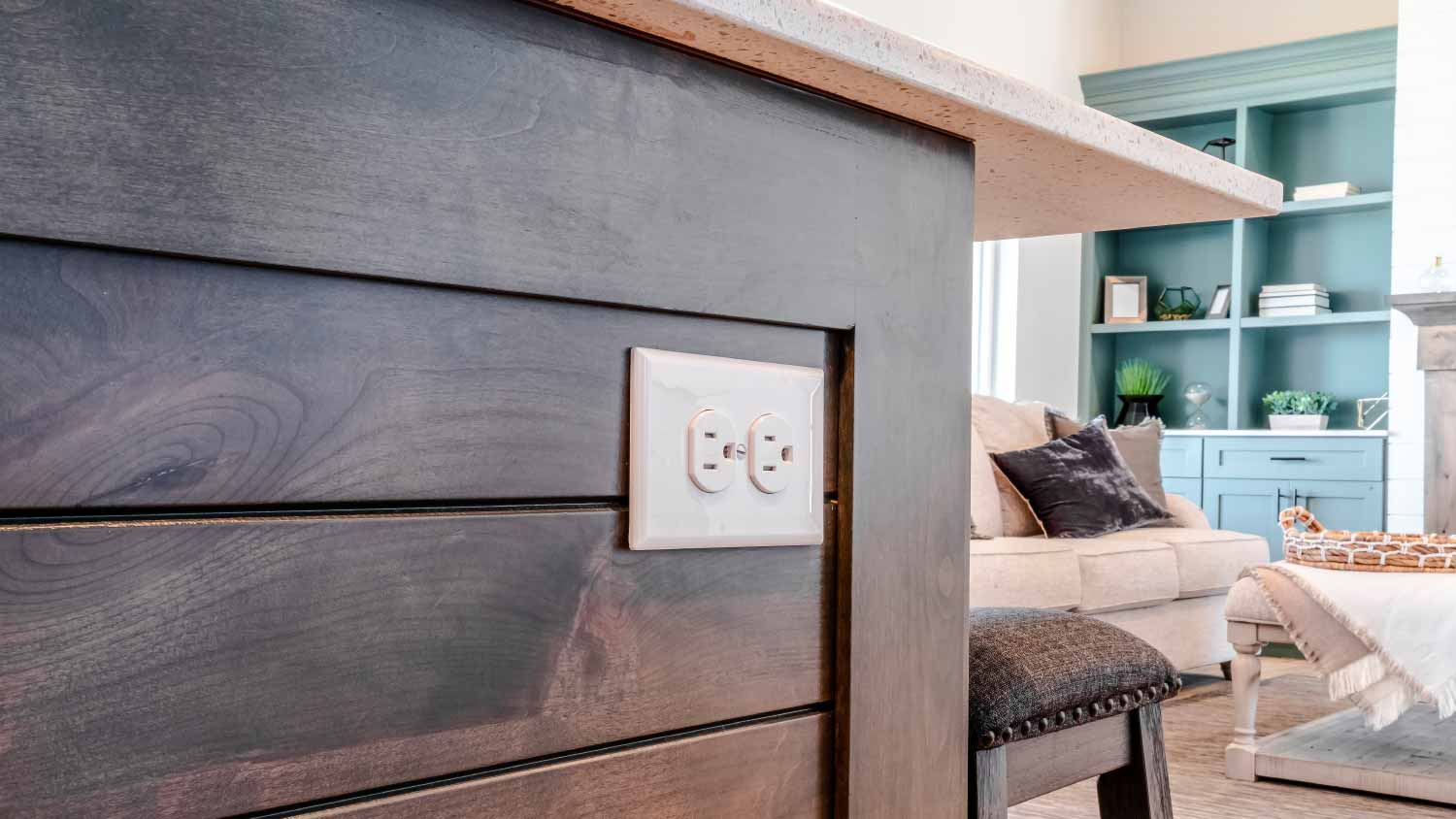
Running electricity to a detached garage or shed brings life to new areas of your home. If you’re building a workspace, an office, or a loft, you could even see a return on your investment by making that space liveable or useful for projects.
Large kitchen islands of a certain size need at least one outlet to stay up to code


If you have or plan to have an island that is at least 24 inches long by 12 inches short, you need at least one outlet.
Small islands or rollable islands do not require outlets unless you want them.
Installing an outlet in your kitchen typically costs about $300 on the low end.
Work with a skilled electrician to have an electrical outlet installed.
Kitchen islands, besides being gorgeous additions to most kitchens, provide a great deal of functional space. Part of the convenience islands offer is additional electrical outlets you can use for appliances or charging your various devices. For the most part, whether you want electricity for your kitchen island is a personal preference. Certain sized islands do need outlets to keep up with electrical codes, while smaller and mobile islands don’t necessarily require them.
For your home to be in accordance with the National Electrical Code, if your kitchen island is 24 inches long by 12 inches short or larger, you must install at least one electrical receptacle. Having a countertop this large means you’ll likely be doing much of your meal prep and general kitchen living around it. Having at least one outlet only helps you utilize the space better.
If your island is smaller than the required measurements, you don’t need to install an outlet unless you want to. Small kitchen islands, especially those on wheels, can’t handle outlets because they’re not permanent structures. Plus, electronics can take up too much room on small islands, making them better for smaller food prep tasks.

While there are requirements that ultimately determine whether or not you need an outlet, there are reasons why you may want to consider one even if you don’t need to have one installed.
Makes cooking easier: Outlets offer easy access to power for small appliances and charging devices while you’re spending time and cooking in your kitchen.
Acts as a charging hub: An outlet on your island provides a convenient charging station for smartphones, tablets, laptops, and other electronic devices.
Installation costs: Adding electrical outlets to both already-existing and to-be-built islands may involve additional installation expenses.
Aesthetic concerns: Some people don’t like the way outlets look on an otherwise pristine island.
Safety concerns: Outlets on the island may, in rare cases, pose electrical safety risks, particularly in households with young children. If moisture or water gets in the outlet, this could cause a risk.
Limited space if used frequently: On smaller islands, outlets invite you to plug in lots of electronics and appliances, reducing available countertop space, and impacting your workspace.
Installing an electrical outlet in your kitchen island isn’t the most expensive home improvement project you’ll come across. What you’ll pay depends on where you live as well as labor costs, how many outlets you want, the state of your current electrical system, and the electrical outlet types you have or want.
The cost to replace an outlet is substantially cheaper and often something you can do on your own, if comfortable. Installing a brand new outlet or replacing the entire electrical system is what’s going to cost you.
Labor costs are the most significant component of the overall expense. DIYing electrical projects other than installing a new light switch are best handled by a licensed electrician in your area. They help ensure safety and compliance with local building codes.
Materials also contribute to the overall cost. You need to purchase the electrical outlet itself, wiring, electrical boxes, and any other necessary components (check with your electrician). In total, your costs will likely look like this:
| Expense | Average Cost |
|---|---|
| Electrician cost | $200–$300 |
| Electrical outlet | $3–$25 |
| Electrical wiring | $100–$1,000 |
| Electrical box | $10–$100 |
Most jobs will cost closer to the lower range since installing a new outlet is relatively easy for most electricians. It ultimately depends on the state of your current wiring and the materials you need or want.
From average costs to expert advice, get all the answers you need to get your job done.

Running electricity to a detached garage or shed brings life to new areas of your home. If you’re building a workspace, an office, or a loft, you could even see a return on your investment by making that space liveable or useful for projects.

How much does adding an electrical outlet cost in Columbus? Get details on average pricing, permit needs, and what affects the total cost.

How much does rewire house cost in Columbus? Learn the major factors that impact the price and how it can help increase your home's value.

Selecting the right wire size helps your electrical system run safely and efficiently. Find out the correct wire size for 100-amp service panels.

Downed power lines are very dangerous. Stay safe by following these instructions if you ever encounter a downed power line.

If you use several electrical appliances in your home simultaneously and the power shuts down, an overloaded circuit could have tripped the breaker. Follow these simple steps to reset your breaker.